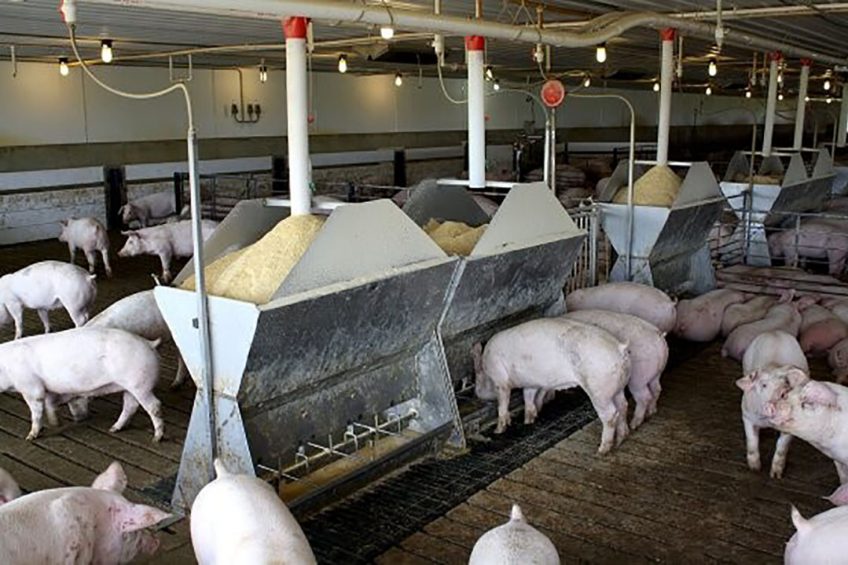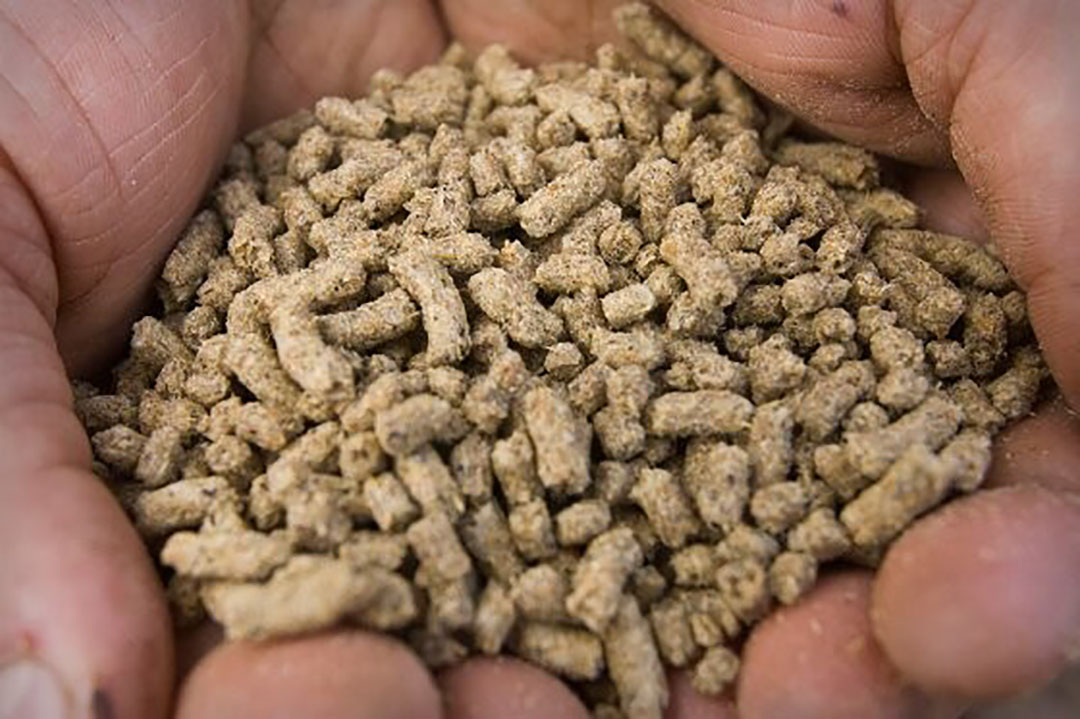The value of feed additives: An economic analysis

Feed costs are the largest costs on a pig farm, which is why feed additives are a welcome method of doing more with less feed. Is it possible to economically quantify the effect of feed additives on a farm?
Economic drivers of swine production can be common across systems or individually unique to a single farm. The common rule of thumb is that feed costs equate to 60% of a producer’s cost of production. Thus, key economic drivers are feed costs and cost of gain. But other production parameters can play a role in these line items for nutritionists. Production systems often focus on bulk ingredient purchasing, energy and/or amino acid composition of diets to make the most profitable adjustments to their nutritional strategies, but rarely focus on feed additives.
Let us take a simple example of corn priced at US$ 4.00/bushel (25.4 kg, ed.), which equates to approximately US$ 28.00 of feed cost for a grower-finisher pig (25–127 kg of body weight), whereas phytase may cost around US$ 0.20 for the same period. It is easy to see why nutritionists would spend most of the time focusing on larger components of feed costs and less on feed additives. However, when researchers start evaluating other parameters, it is possible to find hidden value in feed additives. Enzymes are the best example because nutritionists usually apply a nutrient matrix to formulation, which results in lower feed costs when enzymes are utilised. Depending on the regional markets, these savings may be marginal or extremely valuable for producers.
Xylanase in corn-based diets
In the last 5 years, xylanase in corn-based diets has become a shining example of looking beyond feed formulation costs in how to use a feed additive. In the USA, producers rarely utilised xylanase in swine diets, as – while the digestibility effects were apparent in the literature – growth performance benefits were not consistent enough to justify their use.
However, research in the last decade by Dr Dean Boyd within the Hanor System and others has found a consistent reduction in finisher mortality when xylanase was added to the rations, especially ones containing higher by-products of distillers’ dried grains and solubles (DDGS) and/or wheat middlings. Even in tough market conditions, like for instance in August 2020, a 1% percent reduction (5% vs 6%) is over US$ 1.00 per pig value, but in peak market conditions could be greater than US$ 1.50/pig value.
But evaluating feed additives within a system requires careful consideration and evaluation of both the literature and system research or field trials. A system that is experiencing 6% mortality versus a system with 2% mortality in finishing are 2 vastly different value propositions; the value for the lower mortality producer is only about a third of the value of the other producer. The same can be said with formulation changes. For instance, cheaper feedstuffs may not always be available regionally or fit into a producer’s mill management at an economic value.
Common economic drivers in swine systems
The easiest items to put on the list are average daily gain (ADG), final body weight (BW), feed conversion ratio (FCR), feed costs, mortality/morbidity, and facility costs for a growing pig. For a sow system the most common include non-productive days, pigs/sow/year (PSY) and mortality and/or culling rate. Success for a system or manager are usually correlated to some of these items, but sometimes a deeper dive into management can reveal other economic drivers. Biosecurity is a prime example. Enforcing and implementing stringent biosecurity practices, both on the farm and in the feed mill, to potentially eliminate disease in the system is a huge cost savings opportunity, which improves animal performance and reduces mortality in the system. Recent research reported by Dr Lee Schulz, an agriculture economist at Iowa State University, suggested that depending on which opportunity producers are willing to consider, they may pay as little as US$ 0.36/pig or up to US$ 2.62/pig for enhanced market access, as one example (National ASAS Meetings 2020).
But Dr Caleb Shull (Maschhoffs System, National ASAS Meeting 2020) estimated that overall mortality, from sow to finishing, costs the USA swine producers approximately US$ 2.88 billion, suggesting a re-evaluation by most producers to consider other key drivers to lower mortality.
Other drivers that are not often considered in the value equation for nutritional changes within a system could include ease of implementation, inventory management, water intake, manure characteristics, etc. Producers and nutritionists often focus only on stool consistency for the first 2 weeks post-weaning. But little thought goes into understanding the value of the manure we create and the impacts we have on the environment. The evolution of LCA models is helping us better understand the environmental impacts of waste but these models are still limited for many feed additives.
As is clear, key economic drivers can be complex for nutritionists to navigate within their formulations. Here are 2 examples to understand the opportunities: least cost formulation and performance-driven regarding mortality reduction.

Least cost formulation example
Nursery diets are the easiest diets to pull costs out in formulation, ultimately by using cheaper ingredients versus highly digestible proteins. In nursery diets, lactose or milk products, fish meal, spray-dried porcine plasma (SDPP), zinc oxide and other costly feed ingredients can be quite variable in costs. A recent trial at the University of Arkansas focused on a feed additive to replace either fish meal or SDPP. The results suggest at least equal to better performance.
- Positive control (PC, with extra ingredient) vs negative control (NC): 3% SDPP/ 6% fish meal – additive 0%/3% – reduction in 0.13% SID lysine;
- PH1: US$ 450.87 vs US$ 438.53; PH2: US$ 354.04 vs. US$ 341.70;
- ADFI: Commercial system, first 3 weeks = 1.40 FCR/4.25kg gain. Phase 1: 2.3kg; Phase 2: 3.65;
- Feed cost: US$ 0.073/pig savings; US$ 9,800/5,000 sows.
As can be seen in the current market conditions, even in traditionally expensive diets, altering feed formulation by removing the more expensive diets results in little savings overall. But when evaluating the grower-finisher period, if SID lysine is lowered by just 0.1%, the estimated diet feed costs would be lowered by 1.5%. If an overall FCR of 2.85 is used, that would result in a saving of approximately US$ 1.00/pig, a value proposition most producers would consider implementing. Thus, targeting feed cost savings or even FCR, the finisher period and especially the last 40kg of gain is the most advantageous opportunity in today’s market, in the USA at least.
Optimal performance example
Time to focus on the least cost formulation example and add a 10% improvement in BW/gain and a 10% improvement in FCR during the first 21 days post-weaning.
- Phase 1: US$ 450.87 vs US$ 438.53; Phase 2: US$ 354.04 vs. US$ 341.70;
- FCR: PC = 1.40; NC = 1.26
- Total gain: PC = 5.95kg; NC = 6.55; presume extra gain is US$ 0.50/kg
- Feed cost: PC = US$ 3.17; NC = US$ 3.04
Based on these general numbers the additive would be worth US$ 0.42/pig, which includes the cost of the feed additive. This newfound value with the additional performance benefits now creates a 4:1 return on investment (ROI) for this example; thus, it is an implementable technology.
But how can a producer turn the table to understand what a technology is worth? First by calculating the value from the research and then determining the ROI, it is possible to justify the perceived risk of implementing a new technology. Let us assume a US$ 1.00/pig value, like a mortality benefit or feed cost savings in finishing, an ROI of 3:1 and feed intake at 290kg/pig. This equates to around US$ 0.86/tonne of cost in complete feed, and if the inclusion is 0.5kg/tonne a producer should not pay more than US$ 1.72/kg for this feed additive.
Conclusions
In closing, a system should evaluate all economic drivers and understand their value for that system. Then, technologies should be evaluated only for the key drivers for that system, which have the biggest opportunity to improve profitability. Also, it is essential to understand what the values of different technologies are for a system by not looking just at a set of data that has promising results, but by understanding if the changes fit into the value proposition of the system, beyond dollars, but considering management and ease of implementation.











